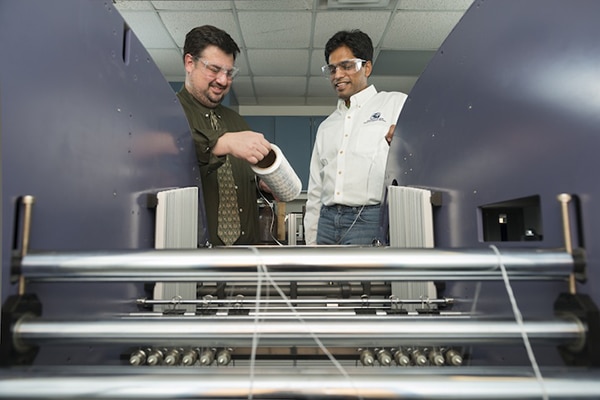Scientists at the University of Delaware’s Center for Composite Materials (CCM) are helping the U.S. Navy to realize the futuristic concept of integrating electromagnetic devices directly into the load-bearing structure of ships through the development of new advanced composite fabrics.

However, according to Mark Mirotznik, an associate professor in the university’s Department of Electrical and Compute Engineering, and Shridhar Yarlagadda, assistant director for research at CCM, the project is not without its challenges. The mechanical properties of the materials need to be preserved while an “EM-friendly environment” is created to ensure the fabric is still usable in a particular application and, while there are limitless combination possibilities for the components of advanced composites, each specific application requires a specific material.
While the project is still ongoing, researchers have been able to develop codes to analyze existing composite structures using a Silicon Graphics Altix UV1000 supercomputer affectionately known to the team as Veyron.
“We now have efficient models for predicting the electromagnetic and mechanical properties of woven fabric composites over a very wide bandwidth,” Mirotznik said. “The supercomputer is ideally suited for the task because it has a massive number of processors, enabling us to run multiple geometries at once, analyze them simultaneously, and then combine the best results to further narrow our search for the best material for a given application.”
“Now, in Phase 2, we’re going in the other direction—we’re developing design tools that will enable hybrid structural fabrics with prescribed properties to be synthesized,” he added.
The research team is already combining Veyron’s capabilities with those of a computerized loom purchased by a grant from the Navy to create “a broad array of custom composite fabrics,” according to Yarlagadda.
“Overall, we believe the tools we’re developing in this project will result in a powerful means of designing useful multifunctional structures, such as radomes, by creating stacks of custom-designed hybrid fabrics,” Yarlagadda said.
For more information, visit the University of Delaware.






